Affiliate links on Android Authority may earn us a commission. Learn more.
Unlimited data takes its toll on US 4G speeds
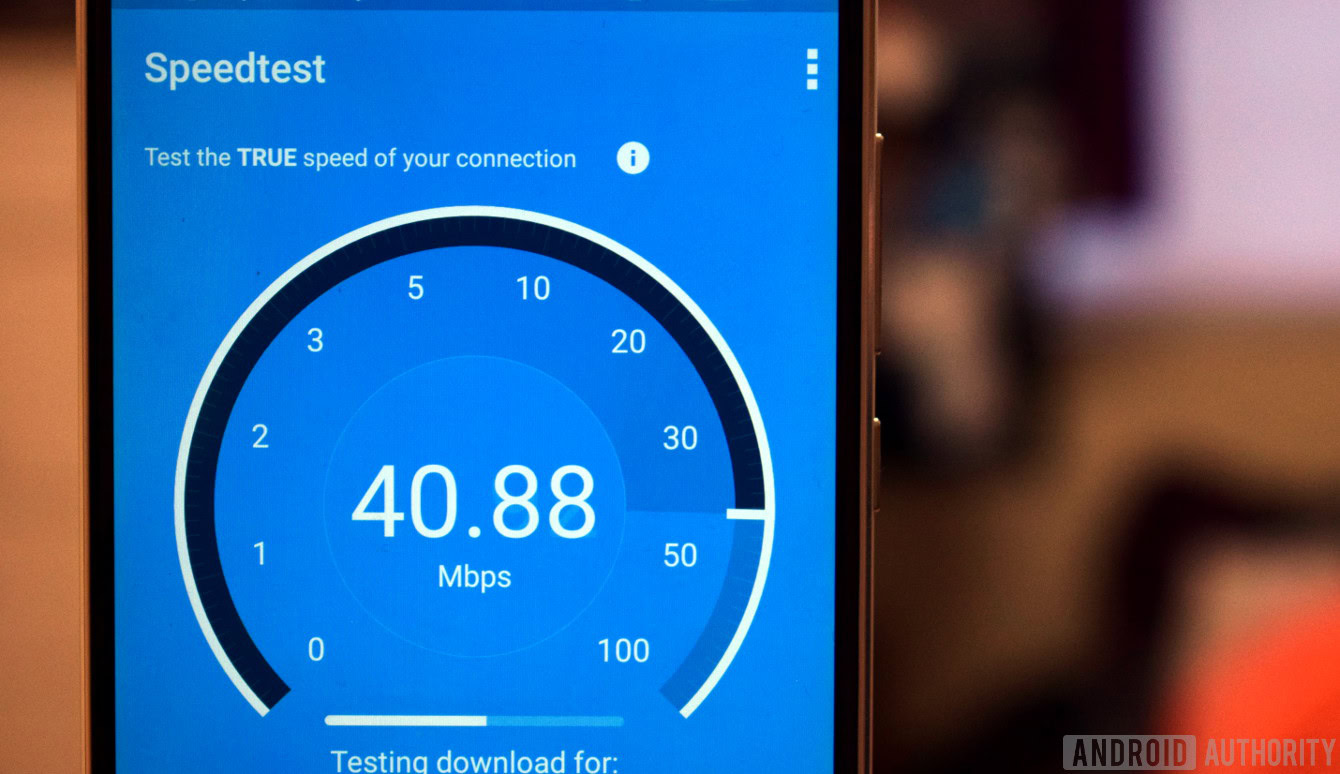
Wondering which is the fastest and most reliable carrier in the US? Then ponder no longer, as OpenSignal has just published its latest insights into the state of US LTE networks. The report reveals a number of stark trends that have taken place over the last year, the most notable of which reveals a slowdown in typical data speeds seen by users on a number of networks, shortly after they starting rolling out their unlimited data plans.
2016 saw the carrier battle in the US really heat up, with bigger and bigger data packages up for grabs. In response to T-Mobile’s increasingly aggressive and popular unlimited data plans, both Verizon and AT&T introduced their own competing options in February this year. While great for consumers looking to enjoy music and video streaming on the go, the move to more and more unlimited data packages appears to have taken its toll on AT&T and Verizon’s networks.
Verizon users have seen their average 4G speeds decline from 16.9 Mbps to 14.9 Mbps, following the introduction of unlimited data packages.
According to the data, Verizon users have seen their average 4G speeds decline from 16.9 Mbps to 14.9 Mbps between December 2016 and June 2017. AT&T customers have seen a similar fall, down to 12.9 Mbps from 13.9 Mbps less than a year ago. Over the same period, T-Mobile has boosted its average data speeds to 17.5 Mbps, up from 16.7 Mbps, moving clear ahead of the pack. If you’re looking for the fastest speed around, T-Mobile is now the clear choice.
T-Mobile isn’t letting up either. Earlier this year, the carrier snapped up 45% — more than any other company — of the premium 600 MHz band in a deal worth $8 billion. It’s set to begin activating sites for this bandwidth in August, meaning its customers (who will need 600 MHz band-compatible handsets) could soon stand to receive even better 4G LTE coverage.
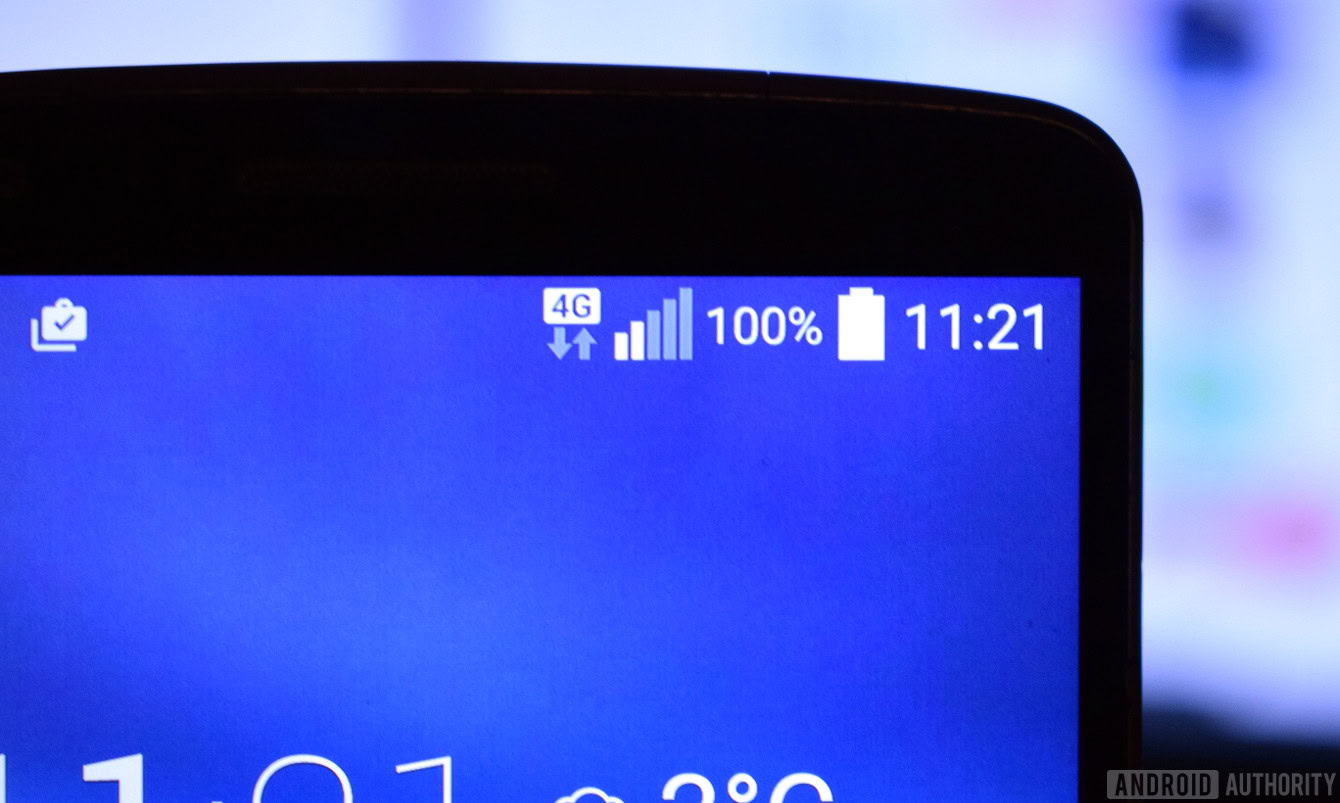
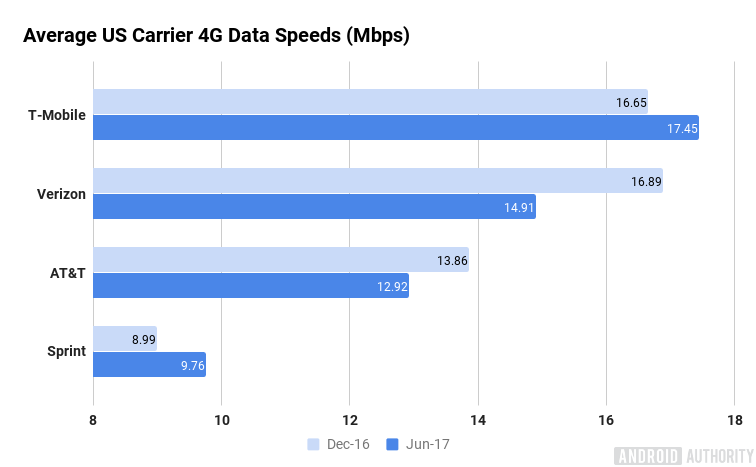
However, the report suggests that rather than Verizon having a slower network than T-Mobile, available bandwidth has effectively reduced for consumers because they are consuming more data. Which is all due to the rollout of new unlimited data plans.
To backup this theory, OpenSignal has, for the first time, begun collecting data to gauge a network’s full data connection capabilities under optimal conditions. According to the results, both T-Mobile and Verizon are tied for peak capacity at 104 Mbps. This suggests that T-Mobile’s network is better at utilizing its maximum network capacity, ensuring that consumers stick closer to their peak maximum speeds more of the time. Verizon, on the other hand, is struggling to ensure the very fastest speeds now that users are able to consume more data. This is almost certainly hindered by the fact that Big Red has twice the number of subscribers as T-Mobile too.
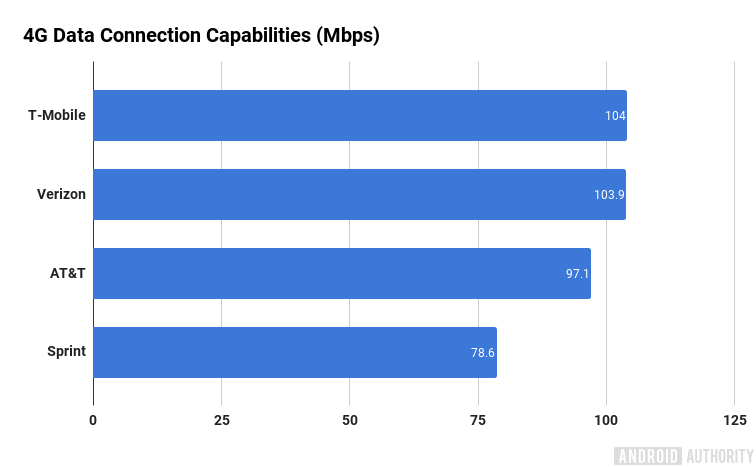
Of course, T-Mobile and Sprint have had unlimited data packages on the market for considerably longer, giving them time to iron out the kinks and make a number of optimizations, such as low-quality video streaming, to their networks to keep data speeds high for their customers. AT&T and Verizon could address this problem by optimizing their networks further and/or rolling out additional capacity, but this will likely take some time.
While Verizon looks to have been hardest hit by this trend, it isn’t all sour news for US carrier networks. Sprint, long considered an underdog, continues to catch up with the bigger players. Although we’ve seen that Sprint’s typical 4G speeds are still notably behind the bigger carriers, consumers have gained roughly 1 Mbps to their typical download speeds in the past 6 months.
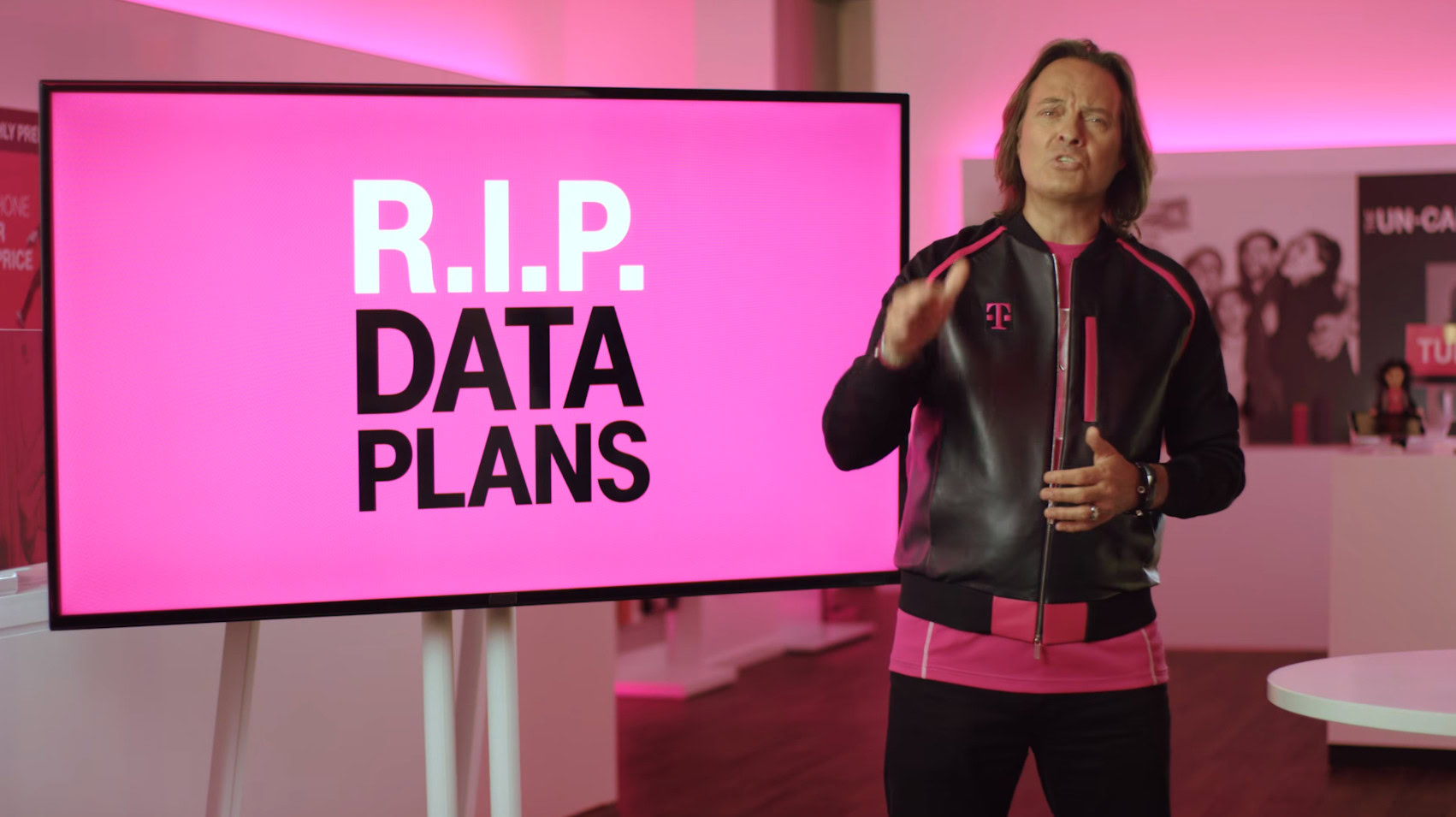
Although Sprint isn't the fastest network, its coverage now matches that of AT&T.
Furthermore, Sprint’s coverage has come on leaps and bounds. The carrier’s typical availability has lept up 10 percent over the past year, putting the network neck and neck with AT&T for coverage in terms of actual user connections. The two aren’t far behind T-Mobile and Verizon anymore, although these two continue to offer connections to customers approximately 90 percent of the time, compared with 83 and 82 percent for AT&T and Sprint respectively.
T-Mobile actually became the first carrier to pass the 90 percent 4G availability mark in OpenSignal’s tests, nudging it ahead of Verizon just slightly. Remember though, this isn’t geographical coverage, instead it measures the time that actual users were able to connect to a carrier’s 4G network. Although it should be said that availability varies considerably with location, and T-Mobile and Verzion tussle back and forth across various cities in the US for the best coverage.

The best US network right now is …
T-Mobile. The carrier consistently scores the highest across all of OpenSignal’s test metrics, including availability, 3G and 4G data speeds, and latency, making it a clean sweep. T-Mobile has made a lot of noise over the last few years, spearheaded by T-Mobile’s idiosyncratic CEO John Legere and the Un-carrier marketing campaign he introduced in 2013, but there’s clearly substance behind all of the bravado and big claims.
That being said, the other big three aren’t that far behind in many metrics. Of course, if US carriers continue to offer more and more access to unlimited data plans, this lead could well change again, and US data speeds could start to fall across all carriers.
For a closer look at the results, and a wider range of metrics and scores, you can check out OpenSignal’s full June 2017 report here.